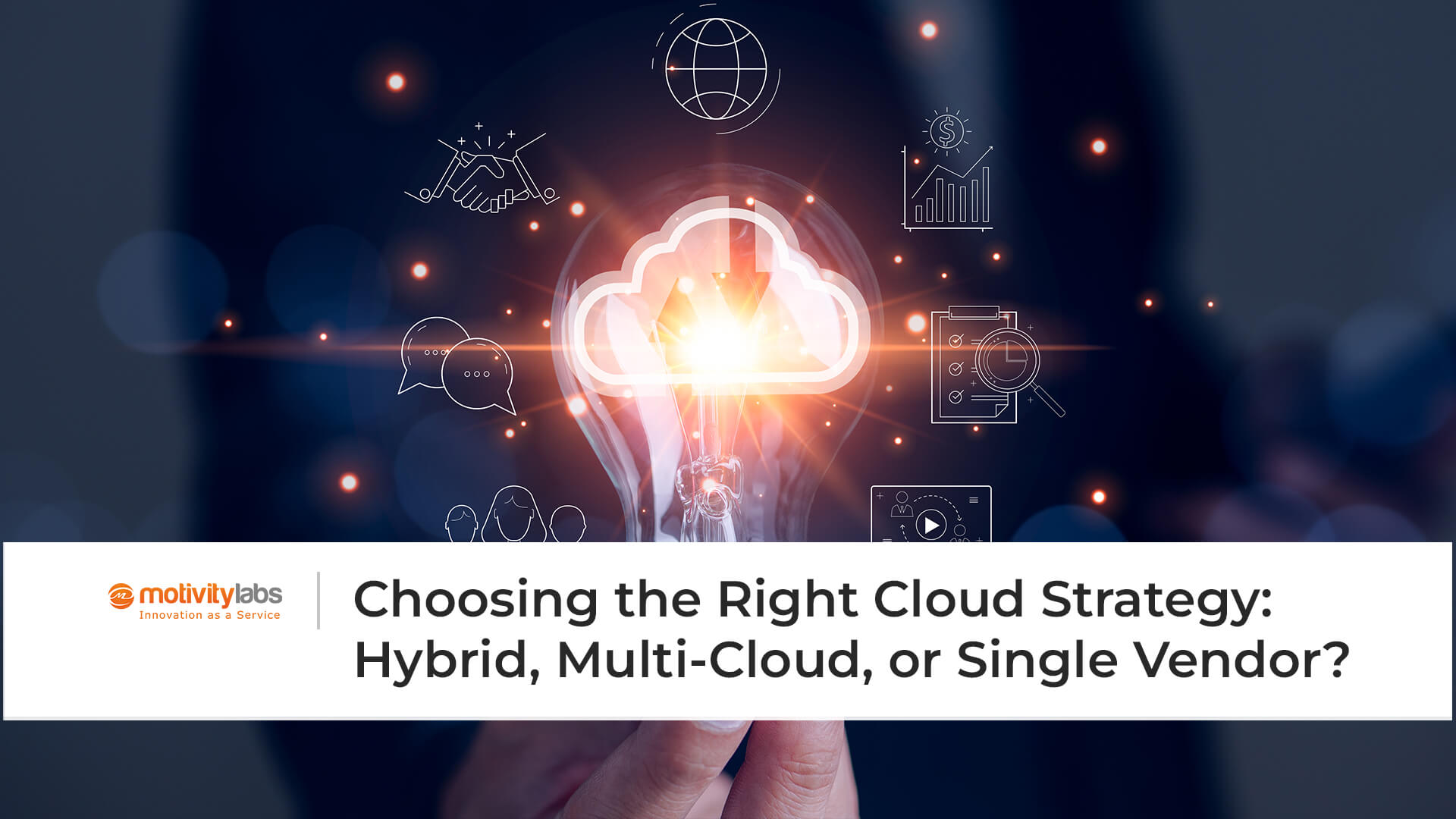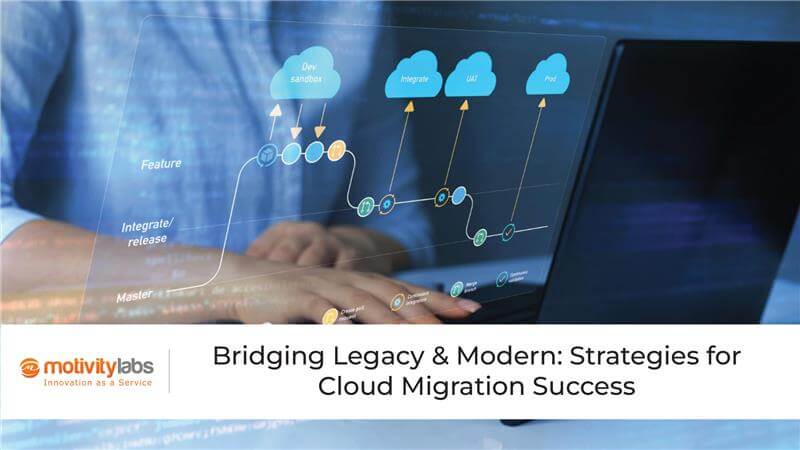The Cloud Conundrum: One Size Doesn’t Fit All
In 2025, cloud adaptation is no longer a question of if but how. A staggering 96% of organisations now leverage some form of cloud service. Yet, despite the ubiquity of cloud computing, one debate continues to dominate boardroom conversations: Which cloud strategy is right for us?
Should an enterprise go all-in with a single vendor, balance control and flexibility through a hybrid cloud, or spread risk and power with a multi-cloud strategy? The answer isn’t binary- it’s strategic. The right approach depends on how a company envisions its digital future, aligns with its operational needs, and anticipates scalability, compliance, and innovation.
This brings us to a key question: in an era of unprecedented digital transformation, how do organisations craft a Cloud Strategy that’s future-ready, flexible, and efficient?
The Evolution of Cloud Strategy: From Simplicity to Sophistication
Early cloud adoption was simple—one vendor, one platform, one contract. It offered predictability but came with limitations in innovation and agility. Fast forward to 2025, and the landscape has dramatically shifted.
Businesses now demand Enterprise Cloud Solutions that aren’t just scalable but intelligent, secure, and adaptable to complex workloads. According to industry research, 92% of businesses are now running a mix of public and private platforms, aiming to maximize reliability, control, and performance.
This evolution has given rise to diverse Cloud Deployment Models, each tailored to specific business outcomes. From the controlled environments of private clouds to the expansive reach of public clouds, organizations are realizing that no single model meets all their needs. Hence, the growing dominance of hybrid and multi-cloud ecosystems.
Hybrid Cloud: The Best of Both Worlds
A Hybrid Cloud approach blends public and private environments, allowing enterprises to enjoy the flexibility of public infrastructure while keeping critical data and workloads on secure, private servers.
In fact, more than 87% of enterprise organizations now implement some form of Hybrid Cloud Strategy, recognizing its potential to transform operations. It’s not just about cost efficiency—it’s about control with convenience.
Why enterprises choose hybrid:
- Flexibility: Move workloads dynamically between environments based on performance and cost.
- Security: Keep sensitive data in a private environment while leveraging the scalability of the public cloud.
- Compliance: Adapt to data sovereignty laws and industry regulations more easily.
- Continuity: Minimize downtime with disaster recovery options across multiple platforms.
A well-crafted hybrid cloud approach is ideal for enterprises that need to balance agility with governance. It’s the digital equivalent of having the best of both worlds—speed and safety, innovation and integrity.
Multi-Cloud Strategy: Diversity as a Superpower
A Multi-Cloud Strategy takes diversification a step further by using multiple cloud vendors—each for its strengths. Organizations deploy workloads across AWS, Azure, Google Cloud, and others, creating an ecosystem that minimizes dependency and maximizes capability.
This approach supports the Cloud Strategy of businesses that prioritize resilience, vendor independence, and service optimization. It’s like assembling a digital dream team—each provider brings unique features to the table, and together, they enhance the overall performance.
Why multi-cloud makes sense:
- Vendor Independence: Avoid vendor lock-in and negotiate better terms.
- Optimized Performance: Leverage best-in-class tools from each provider.
- Risk Mitigation: If one platform experiences downtime, workloads can seamlessly shift to another.
- Innovation: Gain access to varied technologies, AI services, and analytics tools.
However, multi-cloud management can be complex. Without a unified monitoring and governance layer, costs and configurations may spiral. Hence, the success of a multi-cloud approach lies in effective Cloud Vendor Comparison and orchestration tools that ensure visibility, security, and cost efficiency across platforms.
Single Vendor Strategy: Streamlined but Restrained
While hybrid and multi-cloud environments dominate discussions, there’s still a case for single-vendor cloud strategies, especially for small and mid-sized organizations prioritizing simplicity and unified support.
A single vendor provides a consistent experience, integrated services, and one point of accountability—ideal for teams without extensive IT resources. However, this simplicity can turn into a limitation when enterprises grow or require niche functionalities that other vendors offer better.
Still, with proper planning and periodic Cloud Vendor Comparison, a single-vendor model can provide predictable costs and streamlined maintenance. It’s not obsolete—it’s situational.
Making the Right Choice: The Strategy Trifecta
Choosing the right Cloud Strategy isn’t about picking the trendiest option; it’s about aligning technology with business priorities. The decision should factor in:
- Workload Sensitivity: Critical workloads may need private or hybrid setups.
- Compliance Requirements: Regulated sectors benefit from on-premise or hybrid models.
- Budget Flexibility: Multi-cloud may increase initial costs but enhance long-term ROI.
- Scalability and Innovation: Businesses aiming for rapid innovation often choose hybrid or multi-cloud paths.
- Operational Maturity: Enterprises with mature IT teams can handle multi-cloud complexity, while startups may prefer single vendors.
Ultimately, every organization’s digital DNA is unique. The right Cloud Deployment Models emerge when technology serves strategy—not the other way around.
Cloud Vendor Comparison: A Data-Driven Approach
Before committing to any approach, conducting a detailed Cloud Vendor Comparison is essential. It should evaluate:
- Security Standards – How robust are the vendor’s compliance frameworks
- Interoperability – Can services integrate smoothly with existing systems?
- Cost Transparency – Are pricing models flexible and predictable
- Innovation Velocity – How often does the vendor introduce cutting-edge solutions?
- Support Ecosystem – Is technical support responsive and knowledgeable?
This comparative analysis helps enterprises identify which providers best fit their operational and innovation goals, forming the foundation for long-term success.
The Future of Enterprise Cloud Solutions
As cloud technologies mature, the lines between public, private, and hybrid environments will blur. Enterprise Cloud Solutions of the future will rely heavily on automation, AI-driven optimization, and self-healing architectures that predict issues before they occur.
Organizations that treat cloud adoption as an evolving journey—not a one-time setup—will gain the agility to pivot in an unpredictable digital economy. The right Cloud Strategy is not static; it adapts to market shifts, regulatory changes, and innovation cycles.
How Motivity Labs is Powering Smarter Cloud Choices
At Motivity Labs, we understand that every enterprise’s cloud journey is unique. Our cloud consulting practice helps organizations evaluate, architect, and implement tailored Cloud Strategies that align with their goals.
Whether it’s designing a Hybrid Cloud framework, orchestrating a Multi-Cloud Strategy, or optimizing a Cloud Vendor Comparison for better ROI, Motivity Labs delivers scalable, secure, and future-ready solutions.
With a focus on innovation and intelligence, we enable enterprises to harness the full potential of modern Cloud Deployment Models—transforming cloud complexity into a competitive edge.
In a world where 96% of organizations are already in the cloud, the question isn’t whether to adopt it—it’s how to do it right. And that’s where Motivity Labs leads the way: helping enterprises move from cloud adoption to cloud excellence.



